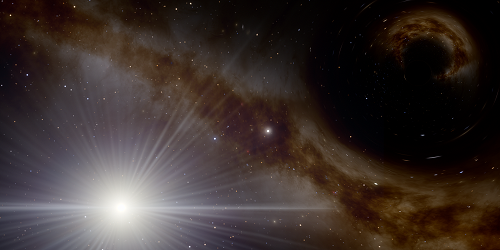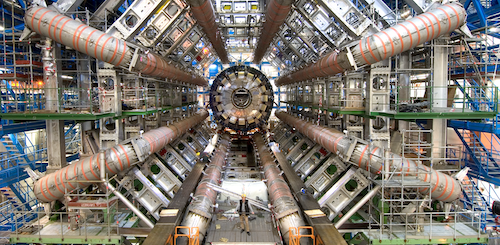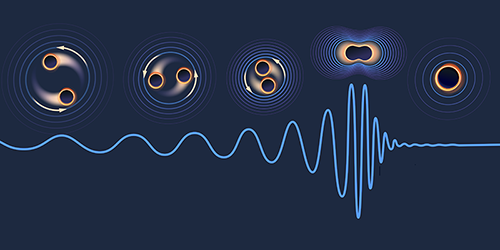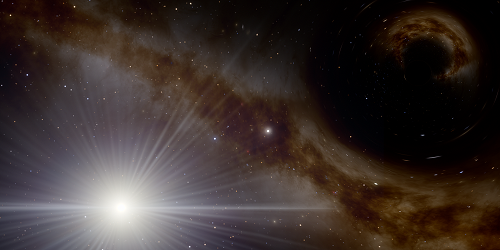September 18, 2025• Physics 18, s124
Black holes born in the early Universe could account for the recently observed ultrahigh-energy astrophysical neutrinos.
T. Gleason-Kaiser; image generated using SpaceEngine (Cosmographic Software)

T. Gleason-Kaiser; image generated using SpaceEngine (Cosmographic Software)
Since 2011, the IceCube experiment at the South Pole has detected several cosmic neutrinos with energies above 1 peta-electron-volt (PeV). And in 2023, the KM3NeT experiment at the floor of the Mediterranean Sea spotted a neutrino with a record-breaking energy of 220 PeV (see Research News: An Ultrahigh Neutrino Detection Makes Waves). The origin of such ultrahigh-energy neutrinos is one of the greatest mysteries in astrophysics. Now Alexandra Klipfel and David Kaiser at MIT have shown that these particles could have been produced in the explosive deaths of primordial black holes [1].
Primordial black holes may have arisen from the collapse of extremely dense subatomic matter just after the big bang. These hypothetical bodies could make up most or all dark matter in the Universe today. Like other black holes, primordial black holes gradually lose mass by emitting so-called Hawking radiation. In turn, they slowly heat up, because a black hole’s temperature is inversely proportional to its mass. Eventually, after billions of years, these bodies violently explode, releasing a burst of ultrahigh-energy particles, including neutrinos.
Klipfel and Kaiser assumed that primordial black holes both exist and constitute a significant fraction of dark matter. They went on to determine the rate at which such bodies would be exploding throughout our Galaxy today. They found that these explosions could account for both the small number and the ultrahigh energy of the neutrinos observed by the IceCube and KM3NeT experiments. The duo’s hypothesis could be tested using data from future detections of peta-electron-volt neutrinos. For instance, if the proposal is correct, these particles should preferentially arrive from the Galactic Center, where the density of dark matter is greatest.
–Ryan Wilkinson
Ryan Wilkinson is a Corresponding Editor for Physics Magazine based in Durham, UK.
ReferencesA. P. Klipfel and D. I. Kaiser, “Ultrahigh-energy neutrinos from primordial black holes,” Phys. Rev. Lett. 135, 121003 (2025).Subject AreasRelated Articles

 More Articles
More Articles

